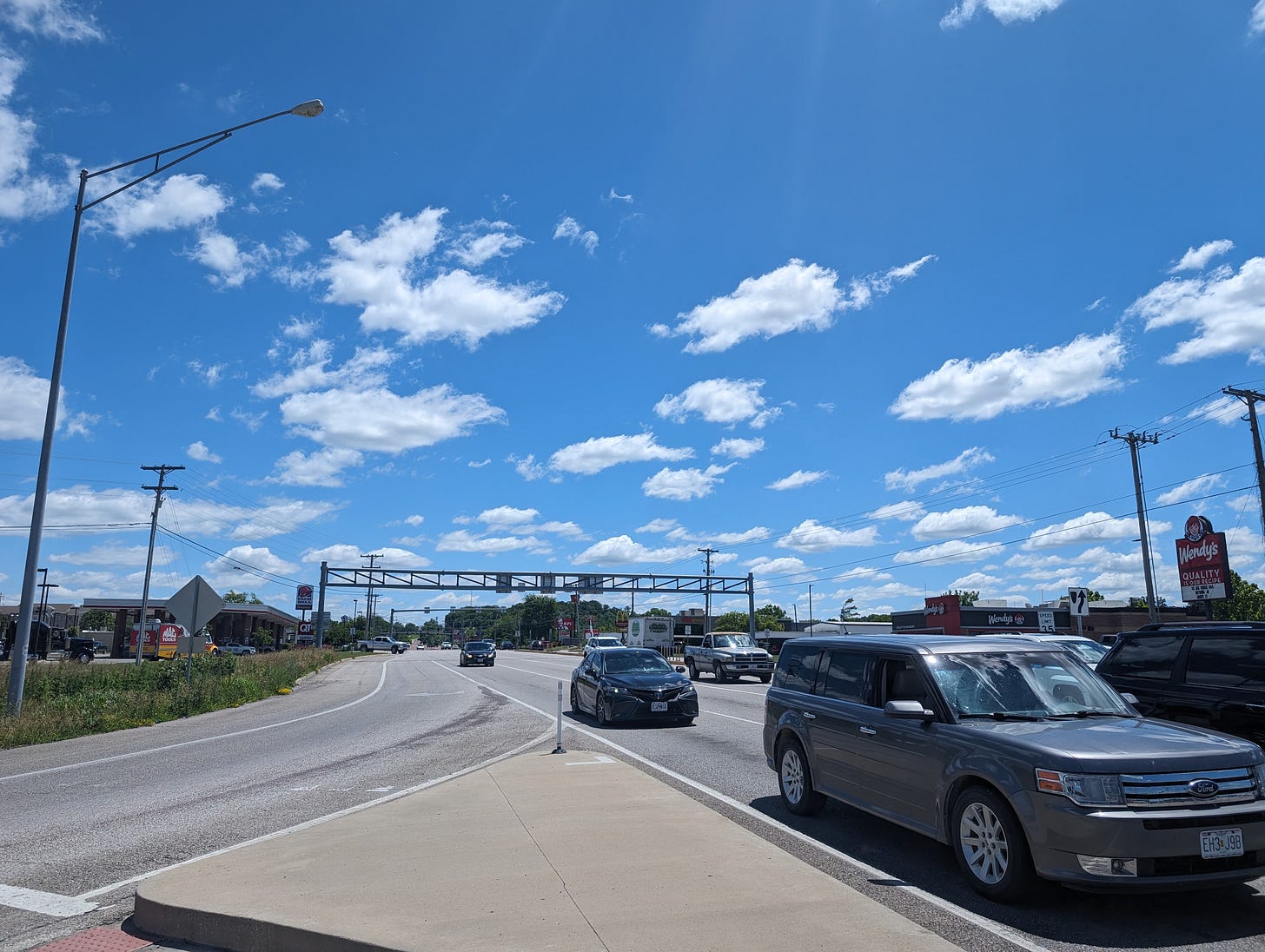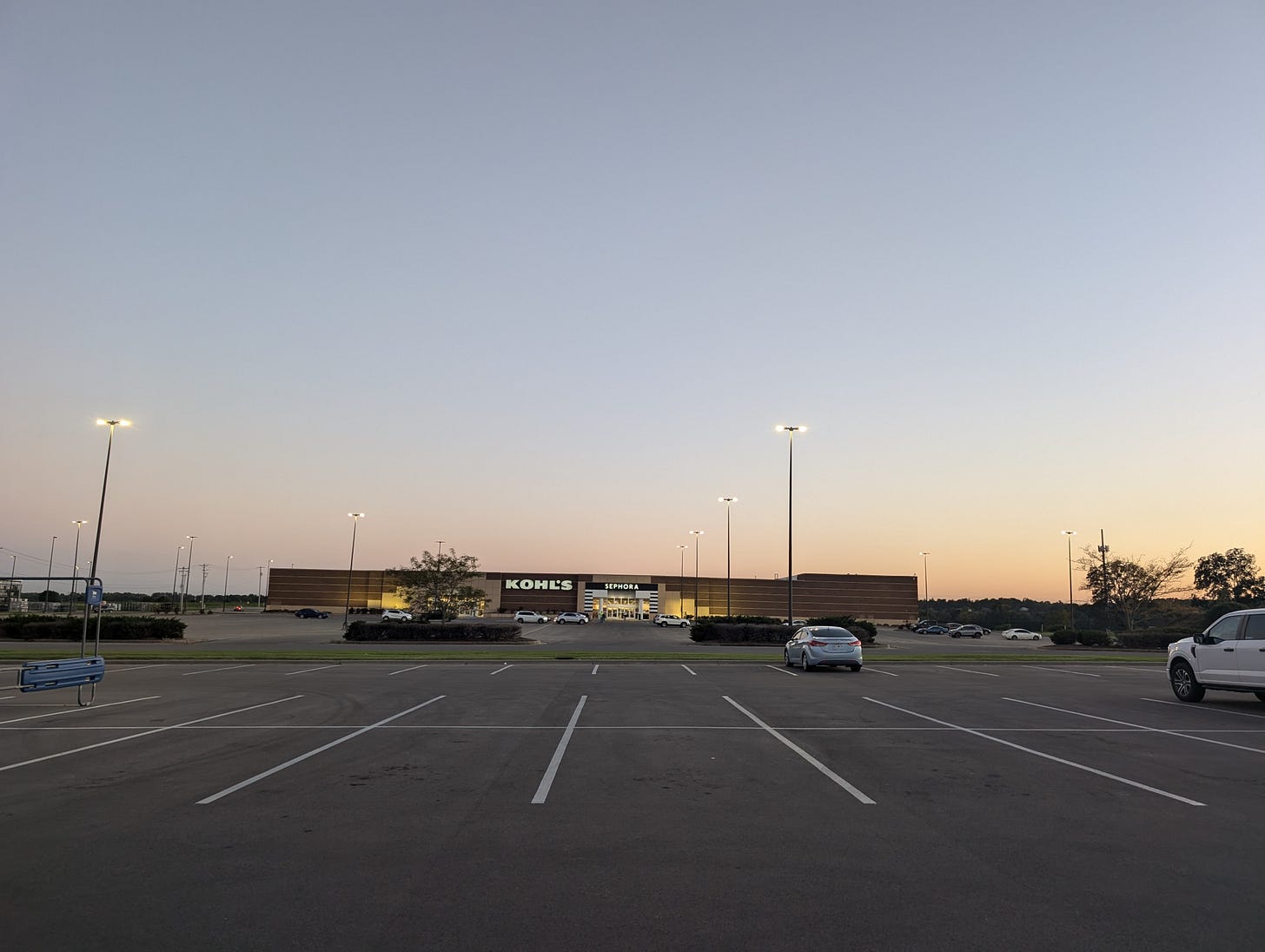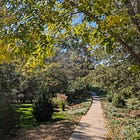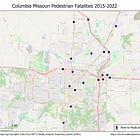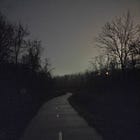How not to be hit by a car
How to walk where cars are, and when not to cross at an intersection.
The first rule of walking is also the most important. Don't die. By far the greatest danger to the modern American pedestrian is the car, roughly 7,500 American pedestrians are killed by cars each year. This post offers some suggestions on how walk safely and reduce your risk of being hit by a car.
Note: the focus here on actions that an individual walker can take is not an attempt to remove blame from traffic engineers, drivers, regulators, state and local governments, vehicle manufactures, or anyone else responsible for creating a world that is dangerous to travel on foot. The responsibility for pedestrian fatalities lies, with them, not with their victims.
Walking in this world will never be perfectly safe. As walkers there are things we can do it minimize our risk. The suggestions in this post are based on my own personal experience. Though they match up well with guidelines I’ve seen elsewhere. I believe them to be sensible, but I can only say for sure that they have worked for me, so far. When walking in a sometimes dangerous world, use your best judgement, and stay safe.
Don't be in front of a moving car
Cars are fast and heavy. Don’t be in front of them. You will regret it. The best way to be safe from cars is to choose routes where the cars aren’t. A trail in the woods reduces your chance of being killed by a car to nearly zero. A sidewalk, next to a busy road, is more dangerous, but still safe.1
Most drivers will avoid pedestrians, but some are inattentive. Because it is hard to know who is paying attention and who is not, assume every car is inattentive, until they have clearly reacted (made eye contact, moved over, waved, etc..). It is safest to assume that drivers are, if not actively trying to kill you, at least indifferent about the idea.
Because drivers are not paying attention to you, you need to pay attention to them. Know where the cars are and where they are going to be. Understand who is turning at a busy intersection. Look both ways before you cross the street. Take the headphones off and listen if your view is obstructed. In short, be aware and be careful.
Spaces with Cars
There are a handful of locations where you will need to be where the cars are. The mains ones are, in rough order of risk:
Residential Streets
Parking Lots
Driveways
Crossing the street
Walking along Roads
Residential Streets
Of all the car spaces, sidewalkless residential streets are the most pedestrian friendly. Walking through a neighborhood is often a good navigational choice. Car traffic, is both slow and infrequent. Walk on the left side, facing traffic and keep driveways in mind.
Parking Lots
An empty parking lot offers opportunity. An empty parking lot is one of the few places where the walker can choose any direction, like a pawn promoted to a queen.
A full parking lot requires more care. Cars are looking for parking, not pedestrians. They also can move in odd or unpredictable ways, including backwards. Fortunately parking lot speeds tend to be slow. Often there are alternative paths, such as partial sidewalk through the sidewalk, or a shopping center frontage that can be more agreeable.
Driveways
Driveways vary a lot. There are quiet drives on residential streets, and busy turns into shopping center parking lots. A sidewalk that crosses a driveway has two sources of vehicles. Those exiting the parking lot into the street, or those entering from the street into the parking lot. Cars exiting the parking lot will be easier to avoid as they will likely stop before entering the street. While they should notice you, they may be distracted by looking for a gap in the traffic. Consider crossing behind vehicles waiting to exit a driveway.
A bigger concern is vehicles turning from the street into the driveway, particularly if they are making a left across traffic. These vehicles are likely watching for other vehicles and may not be paying sufficient attention to pedestrians, especially if they are moving quickly. Always check for turning vehicles.
Crossing the street
There are two places to cross the street. Intersections or places that are not intersections (midblock).
Crossing the street at intersections should be the default unless you have good reason not to. If there is a pedestrian signal or crosswalk, use it, even if it means going out of your way. At an intersection vehicles will be on the lookout for vehicles and (hopefully) pedestrians. While you may have right of way do not assume that vehicles will yield to you, even if they ought to. Use caution around larger vehicles which have significant blind spots.
It can make sense not to cross at an intersection. Intersections have two challenges for the walker seeking to avoid a vehicular smooshing. The first is that in order to accommodate turning vehicles intersections are often wider, sometimes much wider, than the connected streets. Increased width requires more time spent in the danger zone.

The second problem with intersections is they have more going on. Crossing (green arrow) a major intersection can require you to watch for traffic moving two directions: Vehicles moving perpendicular to your direction of travel (should be a minimal issue if you have a signal), vehicles making left and right turns (red).
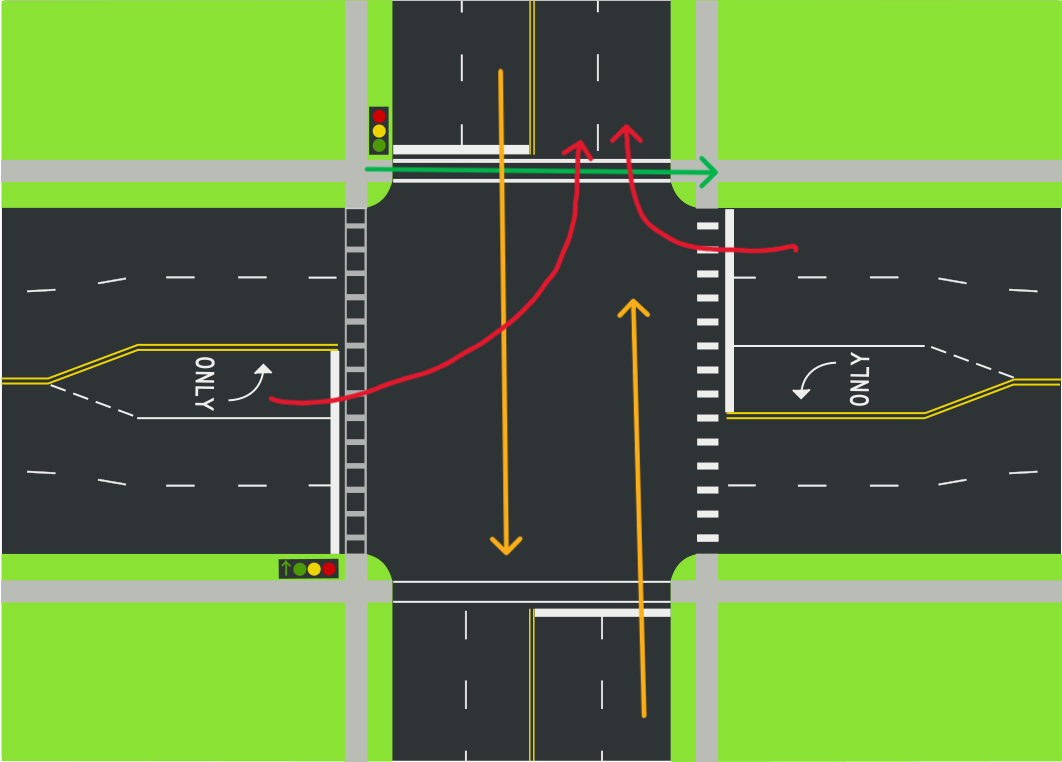
That is up to four things to look out for, and the turning vehicles are coming from alternate directions, including behind you2.
A midblock crossing is both shorter and simpler. In a midblock crossing there are no turning vehicles. However, vehicles will not be expecting you to cross midblock, so take extra care to make sure they are not coming. Maximize your line of sight and be patient, waiting several minutes for the right time to cross a busy street is fine. To maximize your line of sight pay attention to hills, do not cross midblock at the crest of a hill, or when something else blocks your sight. Be very careful at night.
Roads
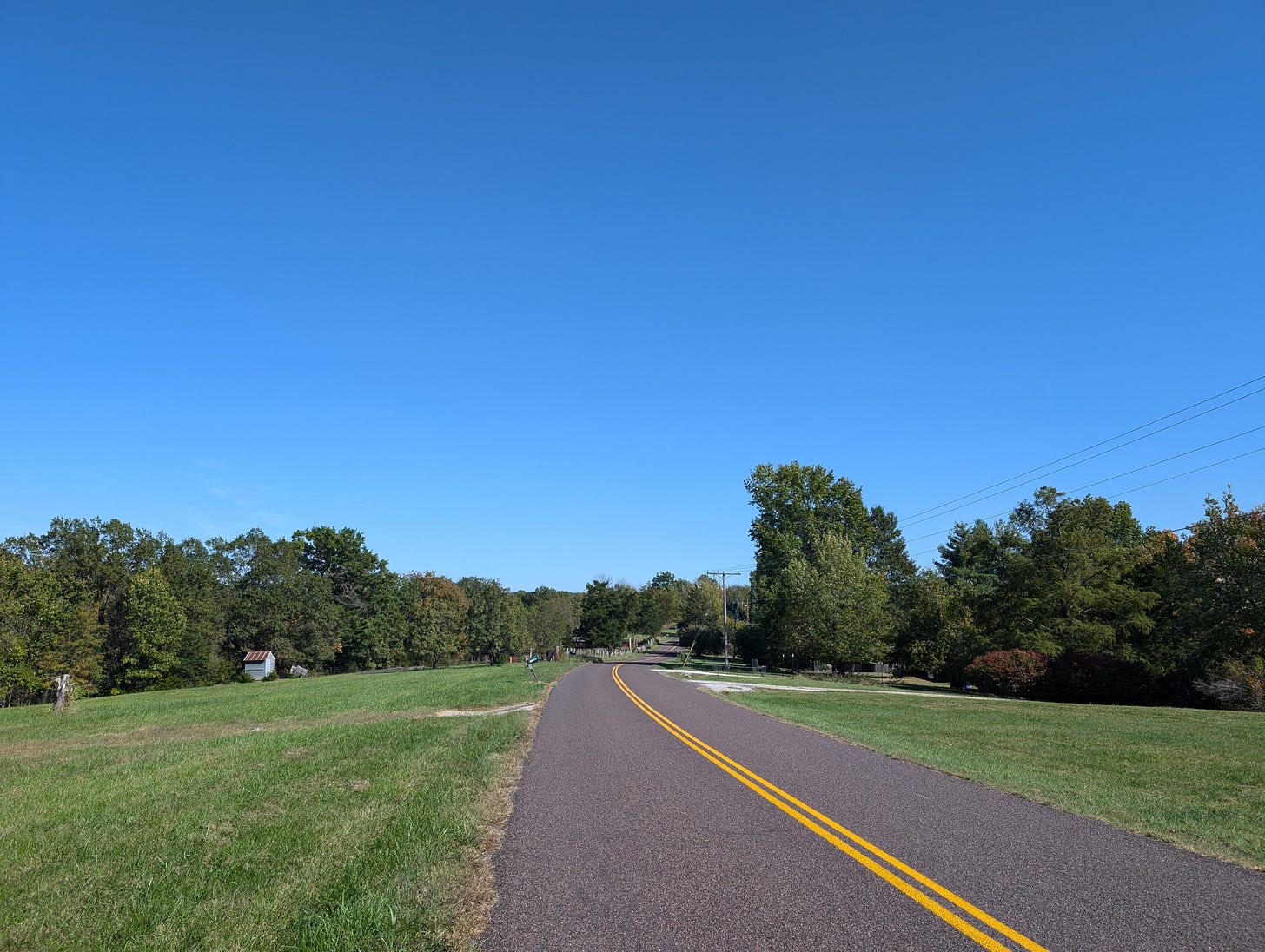
In general, it is best to avoid walking in or on the shoulder of roads, especially at night. However this is not always possible or fun. The rule of thumb in these situations is to walk facing traffic. Making eye-contact or waving at oncoming traffic is also useful, and waving makes the whole experience more friendly. Watch vehicles as they come toward you and be ready to step off of the road if they do not seem to be moving over.
While walking against traffic is a good rule of thumb. It does not seem safer in all circumstances. For example, when cresting a hill, you are robbed of your ability to see oncoming traffic. Sometimes on quiet, hilly, rural roads, I will cross to the right side of the road, before cresting a hill. This should be done well before the crest of the hill, so you have a sufficient line of sight in both directions.
There are several characteristics that make roads better for walking: Less frequent traffic, slower moving traffic, larger shoulder size. Also, look out for driveways or other points you can stand off the road to let cars pass. Be very careful on bridges, which typically offer limited shoulder and no place to bail off to.
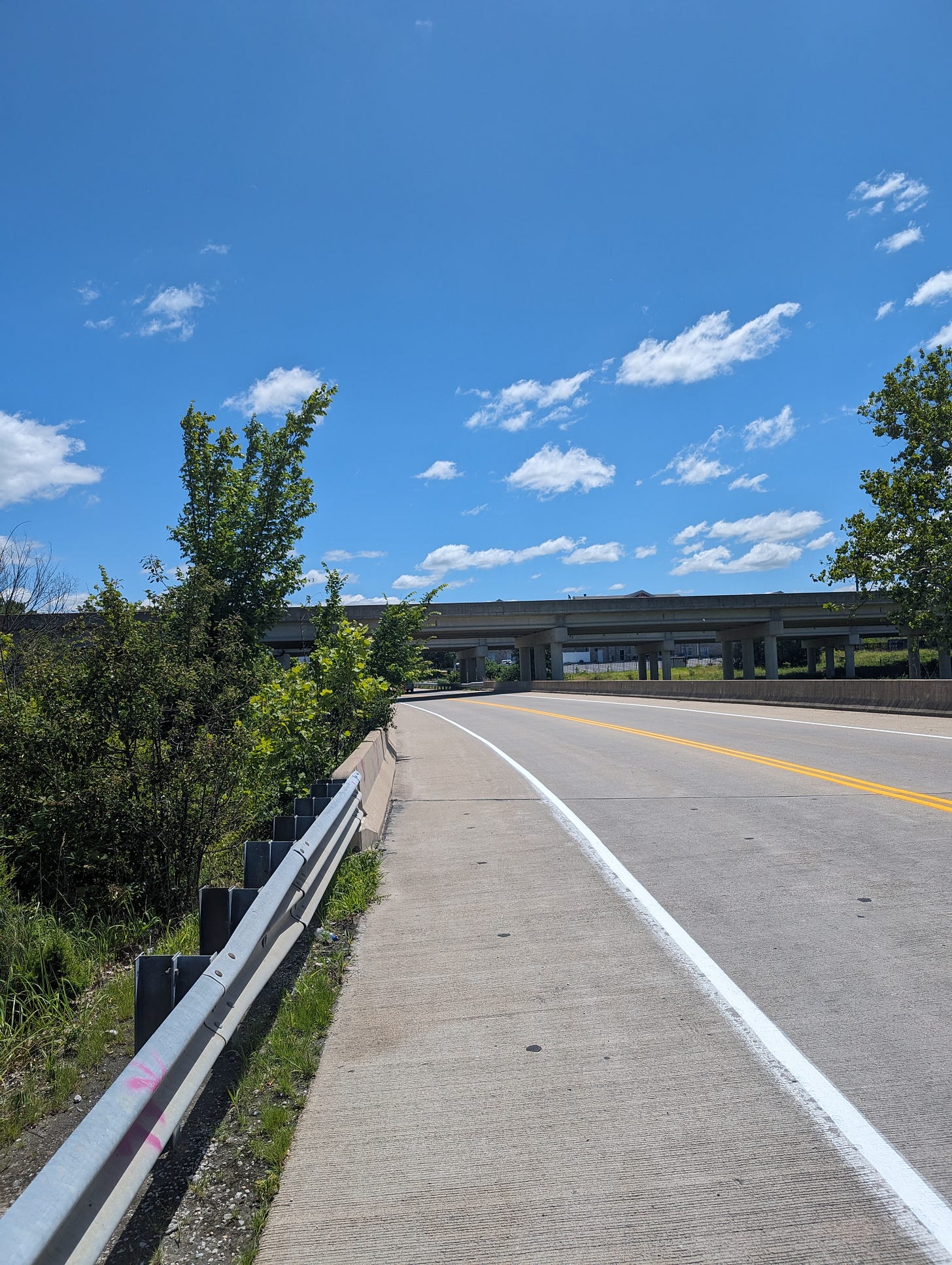
Look both ways before you cross the street
While there is always risk when venturing into the world, and our streets should (and can!) be much safer for walking than they are. Walking can be done with minimal risk by choosing safe routes, being attentive, and patient. Your mother was right, always look both ways before you cross the street.
Happy Walking!
-Chris
Related Posts
A little while ago I looked at pedestrian deaths in Columbia MO between 2017-2022, and virtually all of the pedestrians were killed either crossing the street, or walking along busy roads.
Intersection design can make a big difference here. Pedestrian signals, turn arrows, and pedestrian head starts are some things that can make a crossing much safer.


